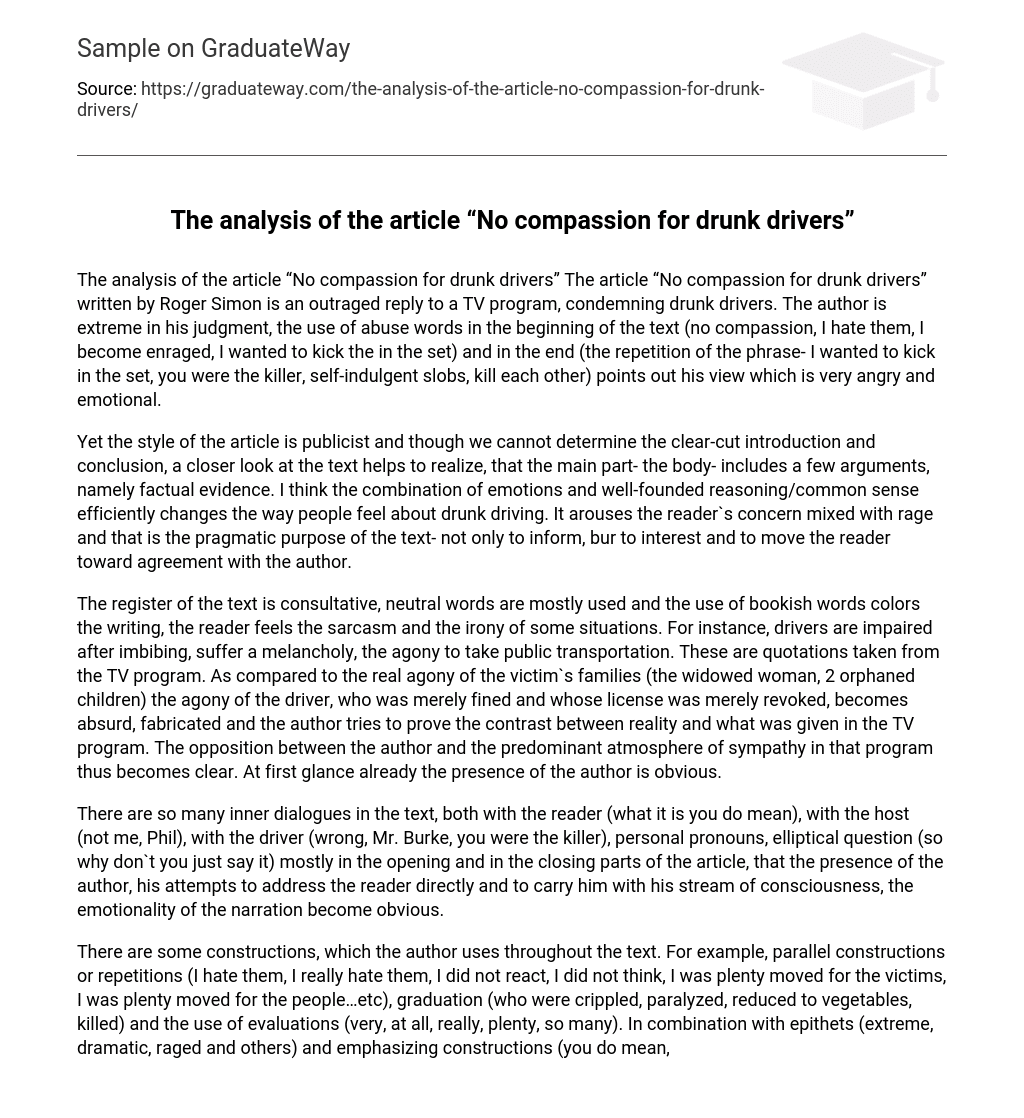The article “No compassion for drunk drivers” written by Roger Simon is a vehement response to a TV program that condemns drunk drivers. The author strongly expresses his disapproval, using derogatory language at the beginning of the text (no compassion, I hate them, I become enraged, I wanted to kick them in the set) and at the end (the repetition of the phrase – I wanted to kick them in the set, you were the killer, self-indulgent slobs, kill each other), which illustrates his furious and passionate viewpoint.
Yet the style of the article is publicist and though we cannot determine the clear-cut introduction and conclusion, a closer look at the text helps to realize that the main part – the body – includes a few arguments, namely factual evidence. I believe that the text effectively combines emotions and well-founded reasoning/common sense to alter people’s perceptions of drunk driving. It evokes concern and anger in the reader, which serves as the pragmatic objective of the text – not only to inform but also to engage and persuade the reader to agree with the author.
The text has a consultative tone with mostly neutral language, but the use of bookish words adds a hint of sarcasm and irony to certain situations. One example is when drivers become impaired after consuming alcohol and experience a sense of sadness and the struggle of using public transportation.
These quotations are from the TV program and highlight the stark contrast between the real suffering experienced by the victim’s family – a widowed woman and two orphaned children – and the relatively trivial punishment given to the driver, who was fined and had their license revoked. The author aims to demonstrate the absurdity and fabrication portrayed in the TV program by juxtaposing it with reality. This highlights the opposition between the author and the prevailing sympathetic tone of the program, making the author’s presence evident even at a cursory glance.
The text contains numerous inner dialogues, including those with the reader (“what it is you do mean”), the host (“not me, Phil”), and the driver (“wrong, Mr. Burke, you were the killer”), as well as the use of personal pronouns and elliptical questions (“so why don’t you just say it”). These elements are mostly found in the opening and closing parts of the article, and they highlight the author’s presence, his direct interaction with the reader, and his stream of consciousness style, which adds emotional depth to the narrative.
The author employs various writing techniques to effectively convey their thoughts and evoke strong emotions in the reader. These techniques include parallel constructions or repetitions, such as the phrase “I hate them, I really hate them.” The author also uses graduation to emphasize the severity of certain situations, describing people as “crippled, paralyzed, reduced to vegetables, killed.” Additionally, evaluations in the form of words like “very,” “at all,” “really,” “plenty,” and “so many” are used to heighten the impact of the author’s words. These techniques are combined with epithets like “extreme,” “dramatic,” and “raged,” as well as emphasizing constructions like “you do mean” and “I do agree” to effectively convey the author’s perspective on the situation and highlight its importance for appealing to our deep-seated emotions.





